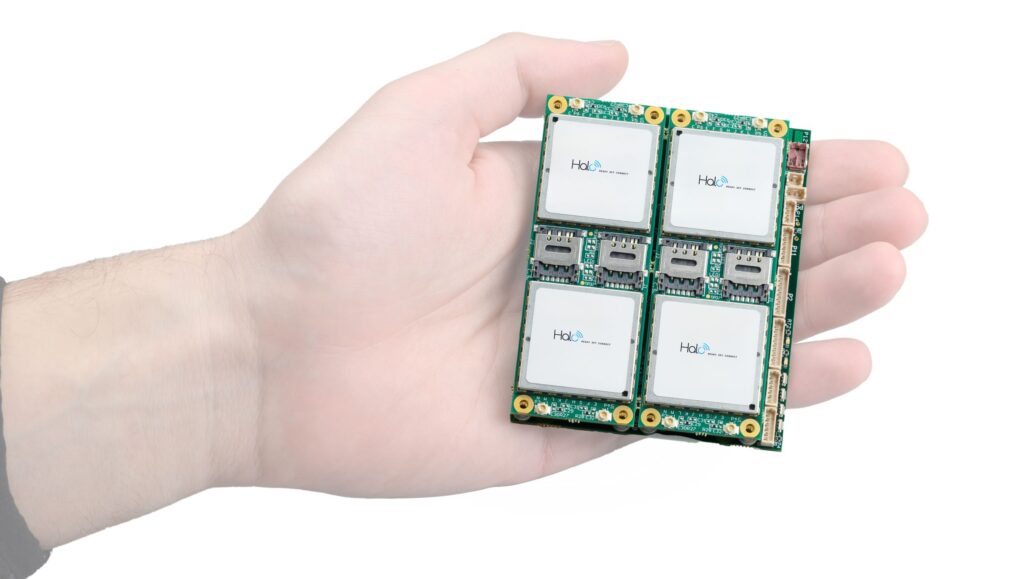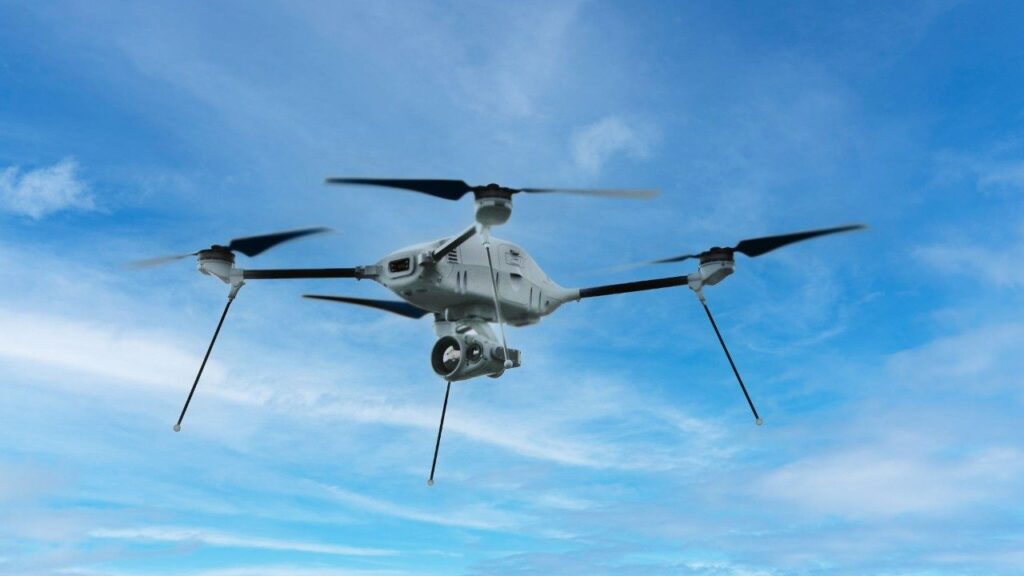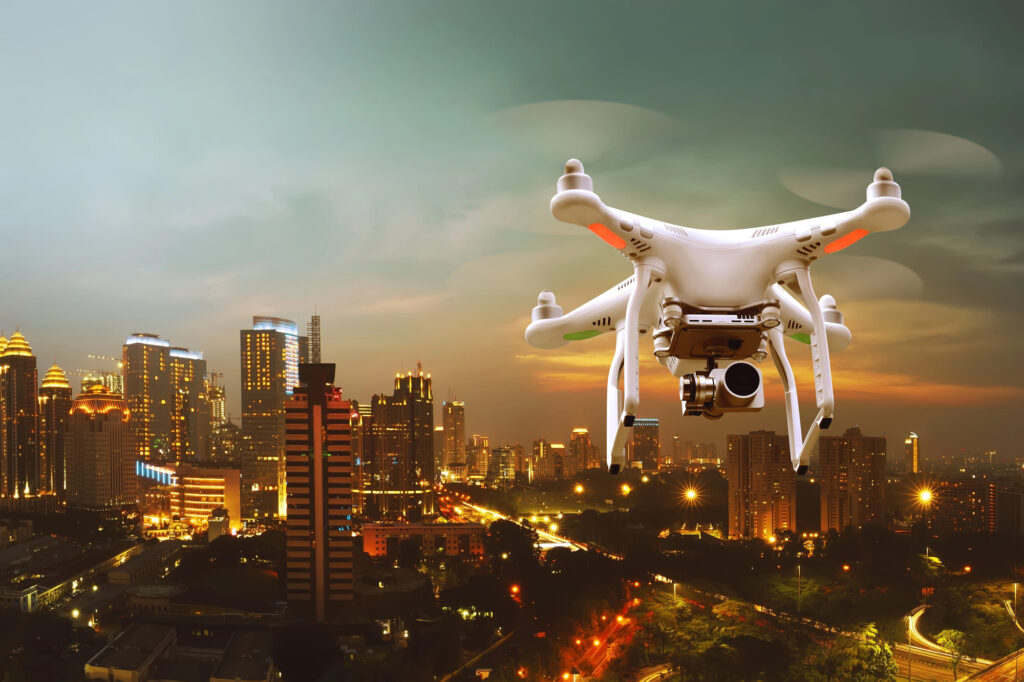A small box attached to unmanned vehicles in the air, on the ground and even at sea provides them with unique full communications capabilities, no matter what the terrain or the task, even when they are beyond the line of sight (BVLOS) of their control centers.
The box actually contains an entire communications software system called Halo that was developed by Or Yehuda-based company Elsight, and is most commonly used for small unmanned aircraft (drones).
The company’s CEO Yoav Amitai tells NoCamels that the unique platform not only works with any small robot or application that requires critical communication but also can connect to any existing network.
“We are providing a highly reliable communication link, or, as we call it, connection confidence,” he says.

According to Amitai, what makes Halo different from similar products on the market is that it can combine multiple networks simultaneously, including major providers such as AT&T, T-Mobile and Verizon.
“In very simple terms,” he says, “we are creating an abstract layer on top of the physical layer to enable always-on connectivity.”
It also allows drone operators to use universal SIM cards rather than country-specific ones, potentially allowing companies in one country to operate in another without having to switch SIM, saving both time and money.
The small, 90-gram box that is attached to the unmanned vehicle was created purely as a way to easily install the Halo software.
It is the software, which Amitai calls the true “secret sauce,” that funnels all the different communications networks into a single channel.
“We couldn’t find hardware that would support what we needed,” he explains. “So we had to go and develop our own hardware.”
This proprietary communications capability, which was already making a name for itself in the international market, proved of great use to the Israel Defense Forces in the immediate aftermath of the October 7 terror attack by Hamas as the country found itself on a war footing.
“Before October 7, less than 10 percent of our revenue was from defense applications,” Amitai says. “And then October 7 came, and the IDF was looking for commercial technologies that could fit into their needs, and they knew about us.”
The system was already in use by the military on October 8, and Amitai says that a question of payment never arose.
“We just let them use it for whatever needs they had,” he recalls.
According to Amitai, the IDF was “extremely satisfied” with the platform, and its effectiveness soon spread by word of mouth throughout different units and departments – including the Directorate of Defense Research and Development, the army’s center for military technology.
Sign up for our free weekly newsletter
SubscribeSince then, the platform has garnered more global attention in this sector, and Elsight earlier this year signed an agreement with Lockheed Martin, one of the world’s largest defense technology companies, to install Halo on all its Indago 4 tactical uncrewed drones.
“We’re starting to get a very strong track,” says Amitai of this new direction.

Elsight is now looking to expand Halo’s military capabilities solely beyond communications, he says. These new features include creating three dimensional maps from the skies, and others that Amitai says cannot be yet discussed.
“We’re constantly looking at how we add more value to our partners by providing them with more features which are not solely on the communication side, but also some adjacent capabilities,” he says.
And this is not the first time that the company has pivoted. With Amitai’s appointment as CEO in 2019, Elsight, which had already existed for around a decade as a communications company, decided to focus purely on the uncrewed vehicles market.
“I felt that we were trying to shoot in too many directions, and for a company with limited resources, we needed to be laser focused,” Amitai explains.
He says that this was the point at which major companies – including such giants as Amazon and Walmart – began to realize the potential of drones, and at the same time the concept of driverless cars really started to take hold.

The company understood that this was a fast-moving environment and a fast-moving market segment to which Halo could add great value, says Amitai, which also allowed Elsight to stand out as “not just another communications company.”
Halo was released at the very end of 2020, and since then has had “great traction” in a range of sectors around the world. These include Walmart drone deliveries in the US and healthcare services in Brazil, Europe and Israel.
Drones, he explains, have become a vital resource for healthcare providers, as they can deliver medical supplies to locations both near and far without having to rely on the vagaries of land-based traffic routes. And keeping drones carrying crucial supplies in contact with the ground is where Elsight shines.
In all, according to Amitai, Halo has been used by more than 100 partners and logged more than 250,000 flight hours for them.
And for Amitai, the company, which is financially independent and even publicly listed in Australia, is heading in the right direction – and he intends to stay on course.
“We’re seeing how we are becoming the industry standard by fact, not by just expression,” he says.
Related posts

Editors’ & Readers’ Choice: 10 Favorite NoCamels Articles

Forward Facing: What Does The Future Hold For Israeli High-Tech?

Impact Innovation: Israeli Startups That Could Shape Our Future




Facebook comments